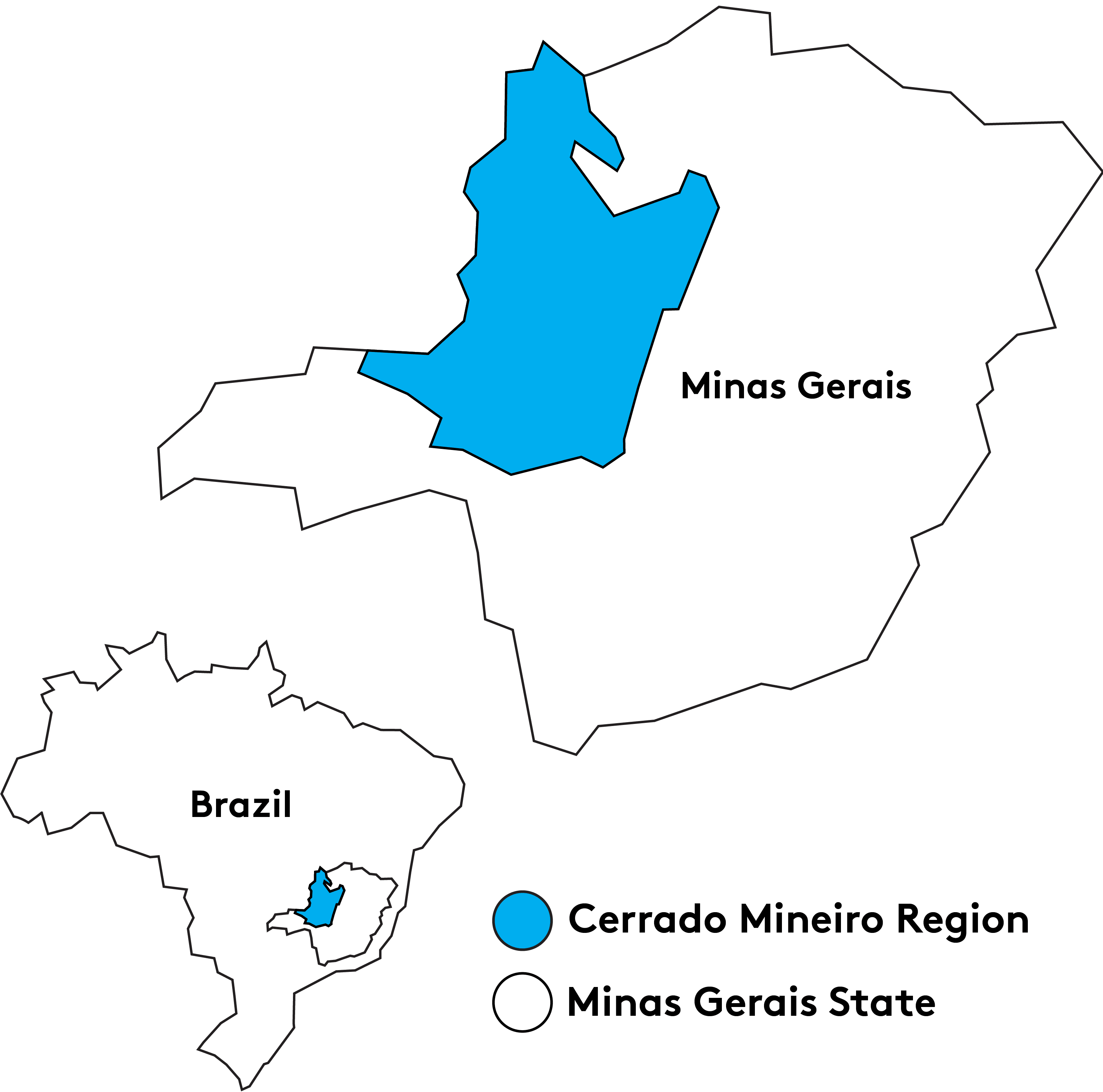The story of the Naimeg family farms goes back to August 17, 1938, when Gerson Naimeg was born in Conselheiro Pena, Minas Gerais to a father recently immigrated from Germany and a Brazilian mother. As a young man he moved his family to the northern state of Paraná in 1957, where he married Hercília Mafra from Botelhos in Southern Minas Gerais. Together they had six children: Joseph Ali, Carlos, Nilza, Gerson, Mauro, and Jorge Fernando.
In 1962, after working for a coffee trader at the Northern Company of Paraná, Gerson acquired his first piece of land and was able to show his passion for coffee by planting a farm in the northern region of Paraná. The family-owned Naimeg group was founded in 1965 as an organization dedicated to the highest qualities of coffee.
In 1981, after the crop had been devastated by three major frosts, Gerson decided to go to the mountains of Minas Gerais and acquired Fazenda Pântano in the city of Coromandel. The family now has three additional farms: Bela Vista, Ouro Verde, and Londrina, administered by Jorge Fernando Naimeg. The six siblings remain united, having preserved their family’s history and legacy for more than fifty years.
Londrina is 394 hectares, with 190 hectares planted with coffee. The trees flower in September and October for the harvest the following July to September. The average temperature is 21° C. The farm grows several varieties of Catuai in addition to Topazio, Mundo Novo, Acacia Cerrado, Rubi, Paraiso, and Catucai.
This lot of Catucai underwent Natural processing. Catucai was developed as a cross between Icatu and Catuai. The first selection was made in 1988 by researchers at the then Brazilian Coffee Institute (IBC) in a population of the Red Icatu cultivar. After generations of breeding and selection in both Minas Gerais and Espírito Santo, the program gave rise to cultivars with red fruits and yellow fruits, then named Catucai.
